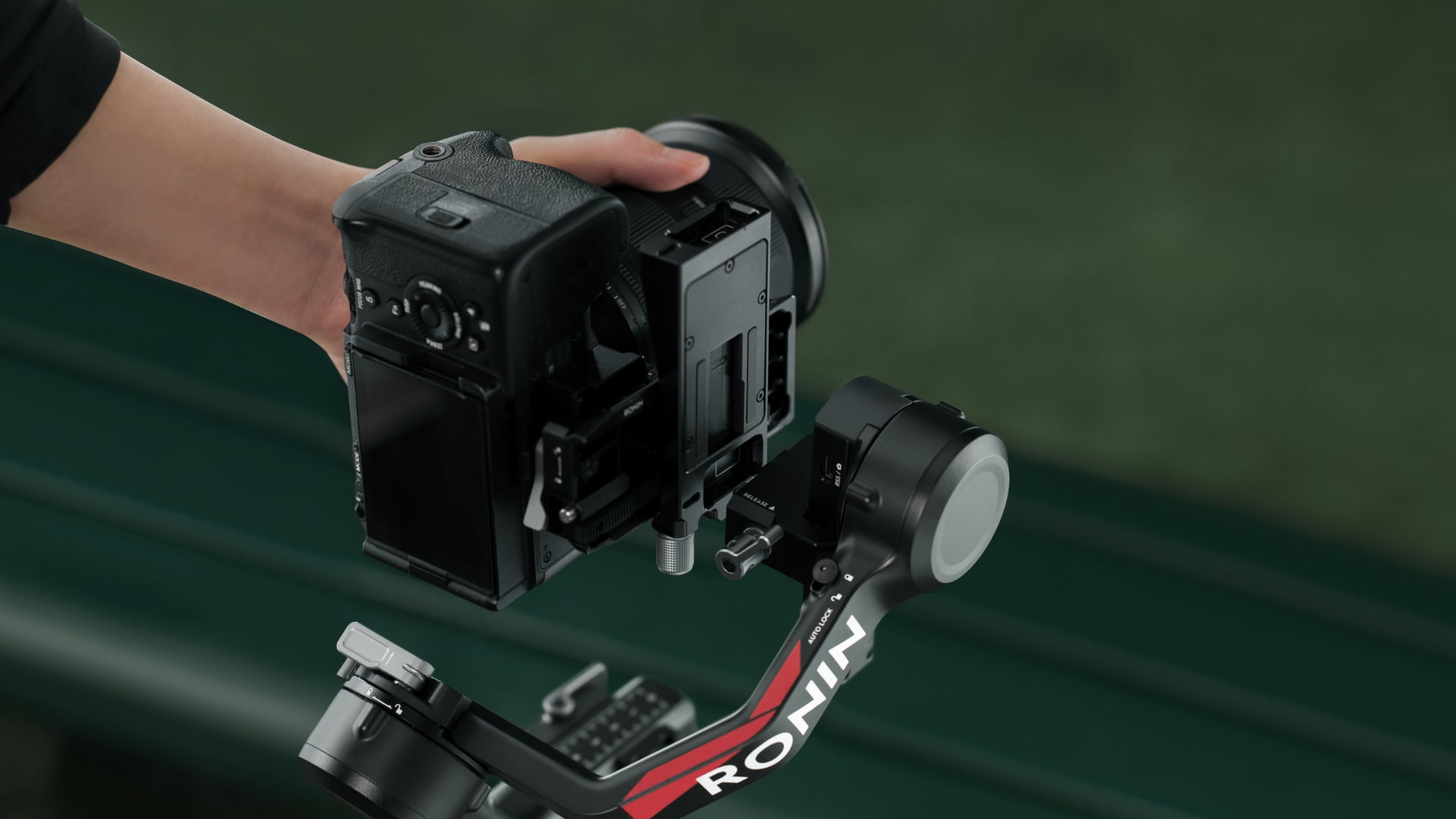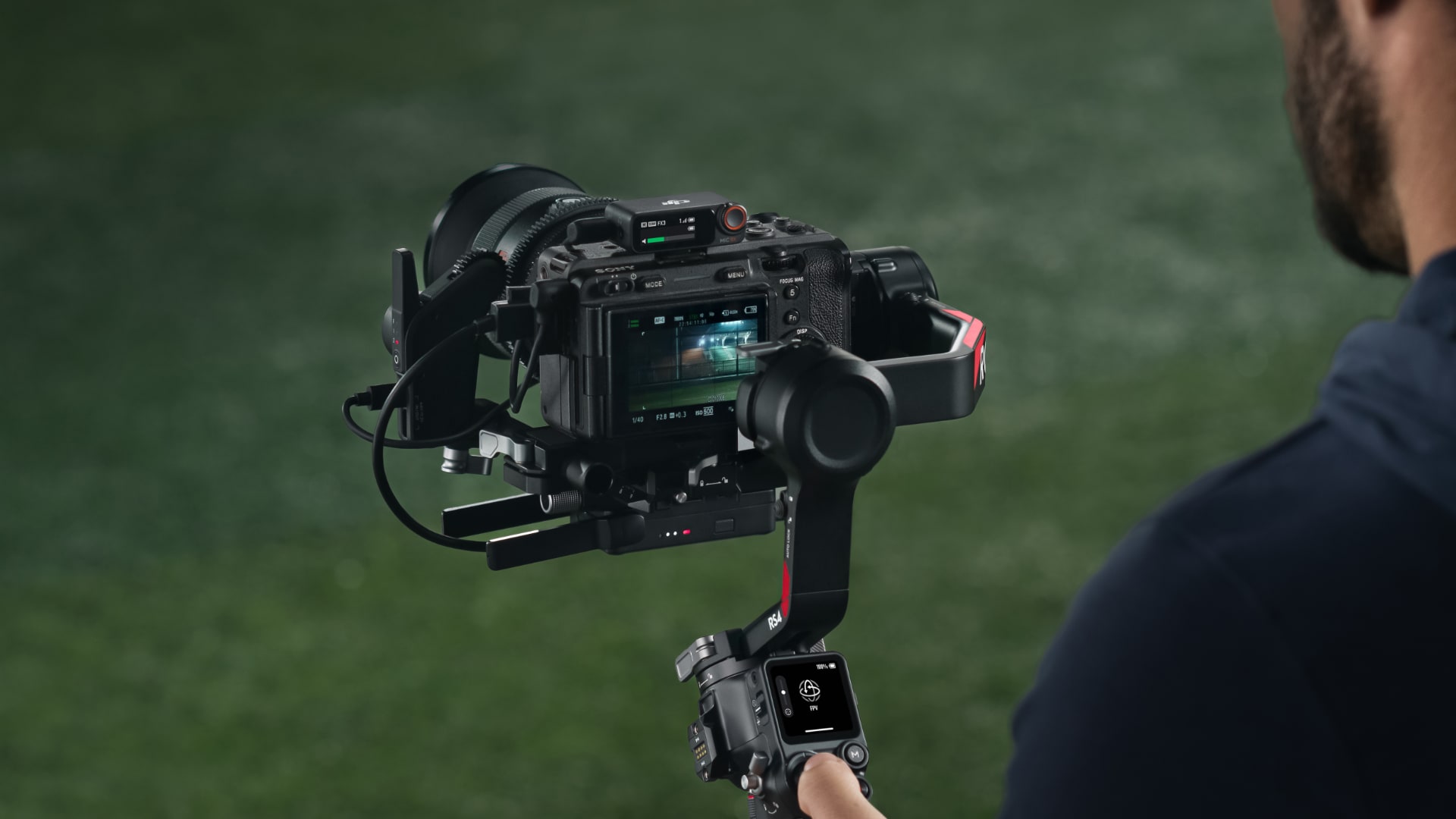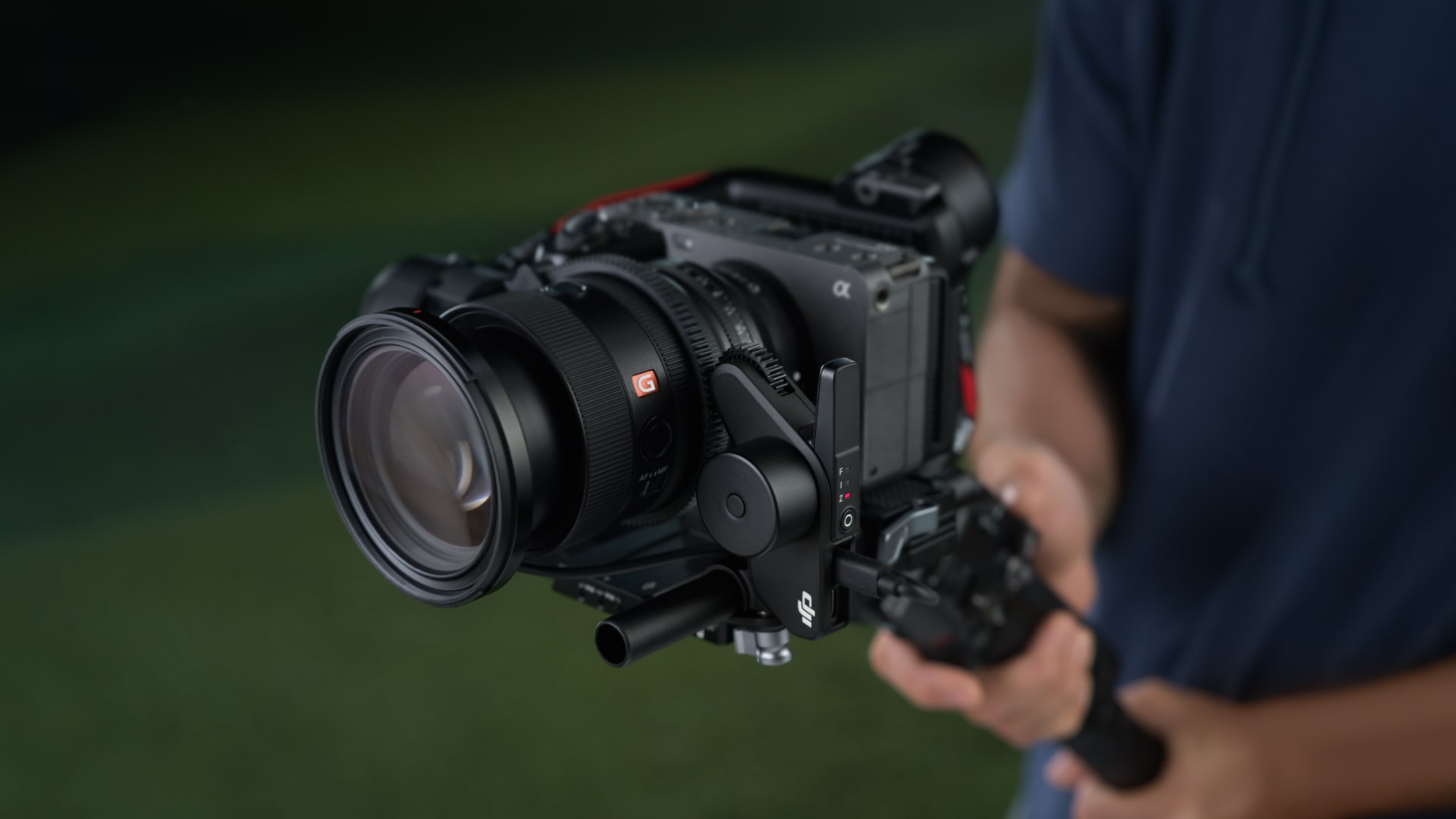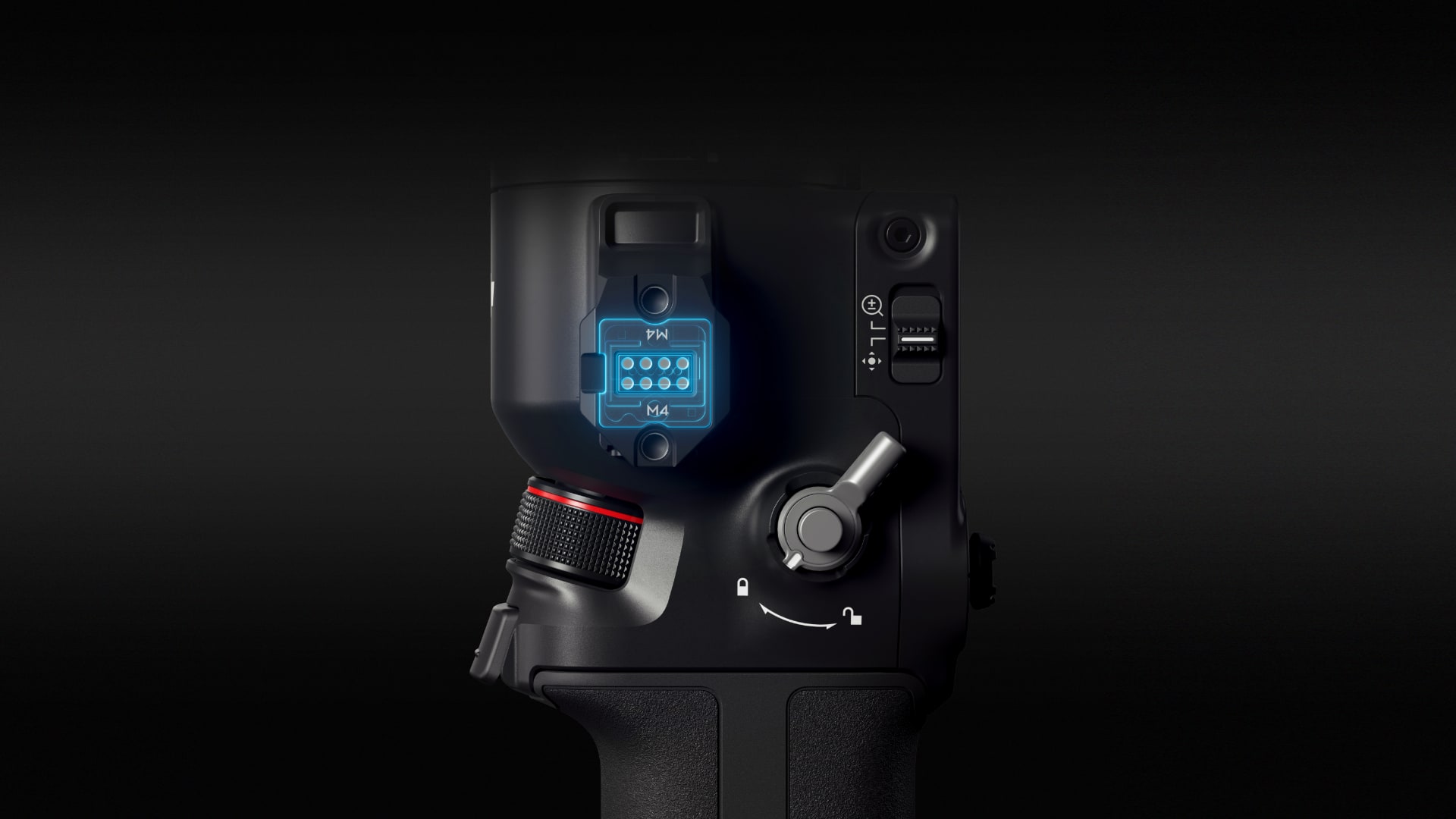








96.990 kr. – 119.990 kr.
Gripping Storytelling
The DJI RS 4 lightweight commercial stabilizer supports next-generation native vertical shooting with enhanced operation efficiency, improved stabilization performance, and an upgraded accessory ecosystem. It empowers solo cinematographers with a more professional and efficient creative experience and the toolset to tell gripping visual stories.

119.990 kr.
Includes additional professional accessories such as the DJI Focus Pro Motor and the Carrying Case. It offers a smoother and more efficient lens control experience for solo cinematographers, achieving a broader range of cinematic expressions effortlessly.

96.990 kr.

22.990 kr.
Ekki til á lager
DJI R Twist Grip Dual Handle hefur NATO-tengi sem gera þér kleift að hald aá DJI RS 2/DJI RSC 2 á ýmsa vegu, til dæmis í báðum höndum eða í skjalatöskustillingu. Virkar með: DJI RS 2, DJI RSC 2
Nánar
10.990 kr.
Léttara og smærra með handfangi. Hægt að lengja og stilla halla til að festa auðveldlega við NATO-tengið. Innbyggt cold shoe og 1/4"-20 festing.
Nánar
6.990 kr.
Ekki til á lager
Festir snjallsíma fyrir eftirlit, ActiveTrack 3.0 eða Force Mobile. Virkar með: DJI RS 2, DJI RSC 2
Nánar
DJI RS 4 features a newly designed horizontal plate, enabling the second generation of native vertical shooting for faster and simpler operation. Without the need for additional accessories, you can simply release the horizontal plate and secure it into the vertical position for an easy switch to vertical shooting, [2] paving the way for efficient vertical video creation.
The automated axis locks allow RS 4 to quickly start working or enter sleep mode, significantly enhancing shooting, transition, and storage efficiency. Additionally, the axis locks have smaller gaps when locked, further reducing gimbal shake.
DJI RS 4 features a Teflon™ coating for all three axes, resulting in reduced friction and smoother balancing.
When switching cameras or lenses, the fine-tuning knob on the tilt axis can move the camera forward or backward, achieving precise, millimeter-level balancing.
The upper quick-release plate has an added adjustable placement guide to ensure secure camera mounting.
The OLED touchscreen incorporates a new auto-lock feature. Once locked, the screen will display the current gimbal and joystick modes at a low brightness. This not only prevents accidental touches but also helps to conserve battery power.

The lightweight body boasts a 3kg (6.6lbs) payload capacity. It can carry mainstream mirrorless camera and lens combinations, enabling comfortable holding with robust power.
Compared with the previous generation, RS 4’s tilt axis has been extended by 8.5 mm, offering expanded balancing space. This allows you to mount mainstream mirrorless camera and lens combinations along with accessories like ND filters, broadening the scope for creative potential.
DJI has comprehensively optimized the next-generation RS stabilization algorithm for different usage scenarios. It strikes a superior balance between stabilization strength and the tactile feel of camera movement, delivering both excellent stabilization performance and an enhanced user experience. Additionally, RS 4 offers significantly improved stability when vertical shooting, easily steadying dynamic shots like running or low-angle perspectives.

DJI RS 4 supports the professional-grade features of DJI PRO products, delivering superior performance that makes solo creation more efficient.
DJI RS 4 can remotely control camera shutter and lens zoom with Dual-Mode Bluetooth technology. In zoom control mode, you can use the joystick to control Power Zoom for PZ lenses and Clear Image Zoom, [3] obtaining a native zoom experience. A camera only needs to be paired once, after which it can reconnect seamlessly and automatically.
When paired with the new DJI Focus Pro Motor, [4] DJI RS 4 allows you to control the lens focus via dial or adjust the lens zoom via joystick. This smooth operation enables efficient lens control.
The trigger function can be customized to FPV mode, where pressing and holding the trigger makes the gimbal’s three axes follow the direction of the grip’s movement. This is particularly useful for shooting rotational footage or simulating POV.
By toggling the gimbal mode switch, you can quickly switch between PF, PTF, and FPV modes. You can also set FPV mode to 3D Roll 360 mode or Custom mode according to the shooting requirements, ensuring RS 4 is precision-ready.

DJI RS 4 introduces an RSA communication port, which allows for the connection of accessories such as the DJI RS Tethered Control Handle [6] and third-party accessories like control handles [6] and remote-control ring handles. [6] You can flexibly switch between different shooting setups according to your creative needs.
Thanks to DJI RS SDK protocol, third-party manufacturers and individual developers can develop customized functions for RS 4, meeting a wider range of shooting requirements.
DJI RS SDK is currently only available in English and Chinese. If you have requests or questions, please visit the DJI Forum for more details.
The new BG70 High-Capacity Battery Grip [6] can extend RS 4’s battery runtime to 29.5 hours. [7] It also supports powering your camera and accessories with up to 18 W via the USB-C port at the bottom.
| Max Battery Runtime | PD Fast Charging | Rapid Full Charge [8] | Max Power Output |
|---|---|---|---|
| 29.5 Hours | 45 W | 2.5 Hours | 18 W |
Both independent cinematographers and small crews can utilize the Ronin Image Transmitter [6] for high-definition live feeds, remote gimbal and camera control, ActiveTrack 4.0, Force Mobile, and more, achieving an integrated shooting experience with monitoring and control capabilities.
DJI RS series accessories, [6] such as the RS BG30 Battery Grip, RS Focus Motor (2022), and Ronin Image Transmitter, are all compatible with RS 4.
| DJI RS BG30 Battery Grip | DJI RS Focus Motor (2022) | DJI RS Tethered Control Handle | DJI RS Twist Grip Dual Handle | DJI Ronin Image Transmitter |
|---|---|---|---|---|
| The battery grip can power RS 4 for approximately 12 hours. [7] It supports PD and QC 2.0 fast charging protocols. With a 24W charging specification, it can be charged to approximately 80% in 1 hour and fully charged in 1.5 hours, and can be charged separately from the gimbal. | With a maximum torque of 1 N·m, the focus motor delivers a smooth focusing experience. It also adopts a quick-release structure, allowing it to be assembled easily without any tools for faster use. | In the dual-grip configuration (used with the Twist Grip Dual Handle), the handle supports operations such as entering sleep mode, recording, and focusing. Equipped with a NATO port and a cold shoe, it allows for mounting a remote monitor and adding a focus wheel on the side. | The handle features NATO ports and a quick-release design. It allows for swift transitions from dual-handheld to low-angle briefcase configurations without the need for disassembly. It is compatible with accessories that have the corresponding ports. | It supports high-definition live feeds, remote gimbal and camera control, ActiveTrack 4.0, Force Mobile, and many other features, providing an integrated monitoring and control experience for solo cinematographers and small crews. |
96.990 kr. – 119.990 kr.
Við látum þig vita þegar varan er komin aftur á lager
* The DJI Ronin app is required for activation when using DJI RS 4 for the first time.
